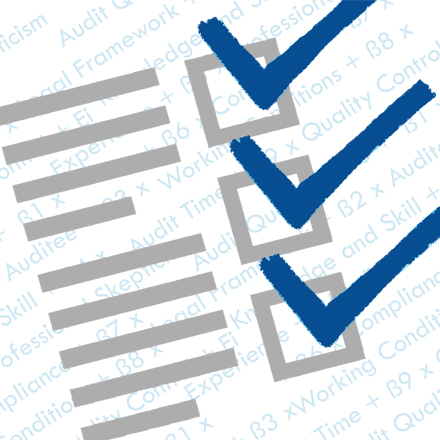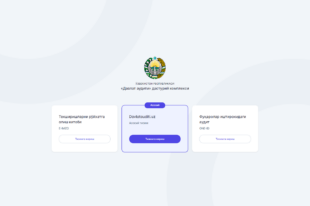Determinants Affecting Audit Quality

[cmsmasters_row data_padding_bottom_mobile_v=”0″ data_padding_top_mobile_v=”0″ data_padding_bottom_mobile_h=”0″ data_padding_top_mobile_h=”0″ data_padding_bottom_tablet=”0″ data_padding_top_tablet=”0″ data_padding_bottom_laptop=”0″ data_padding_top_laptop=”0″ data_padding_bottom=”50″ data_padding_top=”0″ data_bg_parallax_ratio=”0.5″ data_bg_size=”cover” data_bg_attachment=”scroll” data_bg_repeat=”no-repeat” data_bg_position=”top center” data_color=”default” data_bot_style=”default” data_top_style=”default” data_padding_right=”3″ data_padding_left=”3″ data_width=”boxed” data_shortcode_id=”oi7btf8x3r”][cmsmasters_column data_width=”1/2″ data_animation_delay=”0″ data_border_style=”default” data_bg_size=”cover” data_bg_attachment=”scroll” data_bg_repeat=”no-repeat” data_bg_position=”top center” data_shortcode_id=”i7rz9ic1b”][cmsmasters_image shortcode_id=”qy34kjpwp” align=”center” link=”http://intosaijournal.org/wp-content/uploads/2019/07/IJGA-Summer-201915.jpg” animation_delay=”0″]19525|http://intosaijournal.org/wp-content/uploads/2019/07/IJGA-Summer-201915.jpg|full[/cmsmasters_image][/cmsmasters_column][cmsmasters_column data_width=”1/2″ data_shortcode_id=”uri1bjlptq”][cmsmasters_image shortcode_id=”sa5akpqeh5″ align=”center” link=”http://intosaijournal.org/wp-content/uploads/2019/07/IJGA-Summer-201916.jpg” animation_delay=”0″]19526|http://intosaijournal.org/wp-content/uploads/2019/07/IJGA-Summer-201916.jpg|full[/cmsmasters_image][/cmsmasters_column][/cmsmasters_row][cmsmasters_row data_shortcode_id=”ojrm5q2kf” data_width=”boxed” data_padding_left=”3″ data_padding_right=”3″ data_top_style=”default” data_bot_style=”default” data_color=”default” data_bg_position=”top center” data_bg_repeat=”no-repeat” data_bg_attachment=”scroll” data_bg_size=”cover” data_bg_parallax_ratio=”0.5″ data_padding_top=”0″ data_padding_bottom=”50″ data_padding_top_laptop=”0″ data_padding_bottom_laptop=”0″ data_padding_top_tablet=”0″ data_padding_bottom_tablet=”0″ data_padding_top_mobile_h=”0″ data_padding_bottom_mobile_h=”0″ data_padding_top_mobile_v=”0″ data_padding_bottom_mobile_v=”0″][cmsmasters_column data_width=”1/1″ data_shortcode_id=”1dtaci3zxm” data_bg_position=”top center” data_bg_repeat=”no-repeat” data_bg_attachment=”scroll” data_bg_size=”cover” data_border_style=”default” data_animation_delay=”0″][cmsmasters_quotes shortcode_id=”2mb9v3xbr” mode=”slider” speed=”5″ animation_delay=”0″][cmsmasters_quote shortcode_id=”dixr2na3k8″]
Regression analysis revealed two external determinants having the most impact on audit quality … auditees and legal framework.
[/cmsmasters_quote][/cmsmasters_quotes][/cmsmasters_column][/cmsmasters_row][cmsmasters_row][cmsmasters_column data_width=”1/1″][cmsmasters_text]
by Dr. Nguyen Manh Cuong, Deputy Director General, Department of Personnel and Organization, State Audit Office of Vietnam and Dr. Tran Manh Dung, National Economics University
Introduction
The State Audit Office of Vietnam (SAV) issues audit reports at every audit’s conclusion, yet judging and comparing quality among various audits is a difficult task. Some research cites audit quality as the ability for auditors to detect and report material misstatements during the audit process. This ability is highly dependent on auditor proficiency and independence, particularly when misstatements may be derived from fraud.
While several studies have focused on providing solutions to improve audit quality, these solutions do not facilitate identifying determinants potentially affecting audit quality. This article discusses a SAV study performed to identify factors that can affect audit quality at the planning, implementation (process) or reporting phase.
Audit Quality
Audit quality reflects several elements and has different meanings depending on the audit’s phase and/or product (plan, process, report).
Audit plan quality indicates planning is conducted within prescribed guidelines. For the SAV, these guidelines include clearly defined audit objectives, content, scope, materiality, risks, methods, time and personnel. Current guidance also calls for content to be reasonably explained, relevant and evidential.
Audit process quality refers to the ability to detect and report material misstatements, revealing auditor compliance with the audit’s objectives and contents. Here, quality is achieved by ensuring audit documents are developed and recorded in accordance with pertinent regulations; audit evidence has been adequately and appropriately gathered; and the audit team has complied with all organizational regulations and standards.
Audit report quality calls for consistency with applicable standards and regulations, ensuring accuracy, clarity and timeliness. Any errors, fraud and gaps should be properly considered and resolved, and comments, assessments and conclusions should be based on complete, accurate and reliable evidence. Audit recommendations should be lawful, fair, objective and feasible.
Determinants
Several determinants, both internal and external, can affect audit quality, including auditor professional knowledge and skills; skepticism; standards compliance; working conditions; audit duration and quality control.
Methodology
Two hundred questionnaires were sent to audit department heads, audit team leaders and individual auditors Responses were received from 175 participants. Invalid responses (seven in total) were excluded from the study.
A regression model was developed that incorporated independent and dependent variables (including internal and external factors)—legal framework, auditee, knowledge and skill, experience, professional skepticism, compliance, working conditions, audit time, quality control measures—as determinants potentially affecting audit quality.
Empirical Results and Conclusions
Regression analysis revealed two external determinants having the most impact on audit quality: auditees (strongest influencer) and legal framework.
Both determinants demonstrated direct correlation to quality: if the legal framework includes proper and adequate state audit laws, auditing standards, processes and guidelines, audit quality improved.
Analysis indicated decreasing levels of influence associated with audit time, knowledge and skill, professional skepticism, and compliance.
Working conditions and quality control were statistically insignificant, revealing these factors have very little to no effect on audit quality. While quality control showed no evidence it affected audit quality, this result does not coincide with research associated with non-state audit firms. The result could stem from the SAV synchronously implementing audit quality control measures at several levels using strict regulations, which resulted in overall audit improvement with very few significant errors.
Working conditions, also bearing a low significance factor can perhaps be attributed to auditor experience, as well as the ability to perform timely onsite audits using remote technology.
Regression results exposed an “R-square” figure of 0.982, denoting that a 98.2 percent variation in audit quality can be explained through the regression model, with the remaining estimated two percent in variation caused by other factors not included in the model.
Additionally, applying the Durbin-Watson test (to detect the correlation in prediction errors) resulted in an approximate score of two, signifying that the likelihood of model self-correlation is low. Additionally, multicollinearity tests showed Variance Inflation Factors (VIF) between 0.1-2, confirming no collinearity occurrence between variables in the model.
This study, which focused on determinants affecting audit quality, exposes the need for policy makers and auditors to emphasize those factors having significant impact on audit quality, particularly as concerns intensify about effective and efficient public resource use.
For full references and to see the complete regression model results, email the authors at cuongsav@yahoo.com and dungtm@neu.edu.vn.
[/cmsmasters_text][/cmsmasters_column][/cmsmasters_row]





